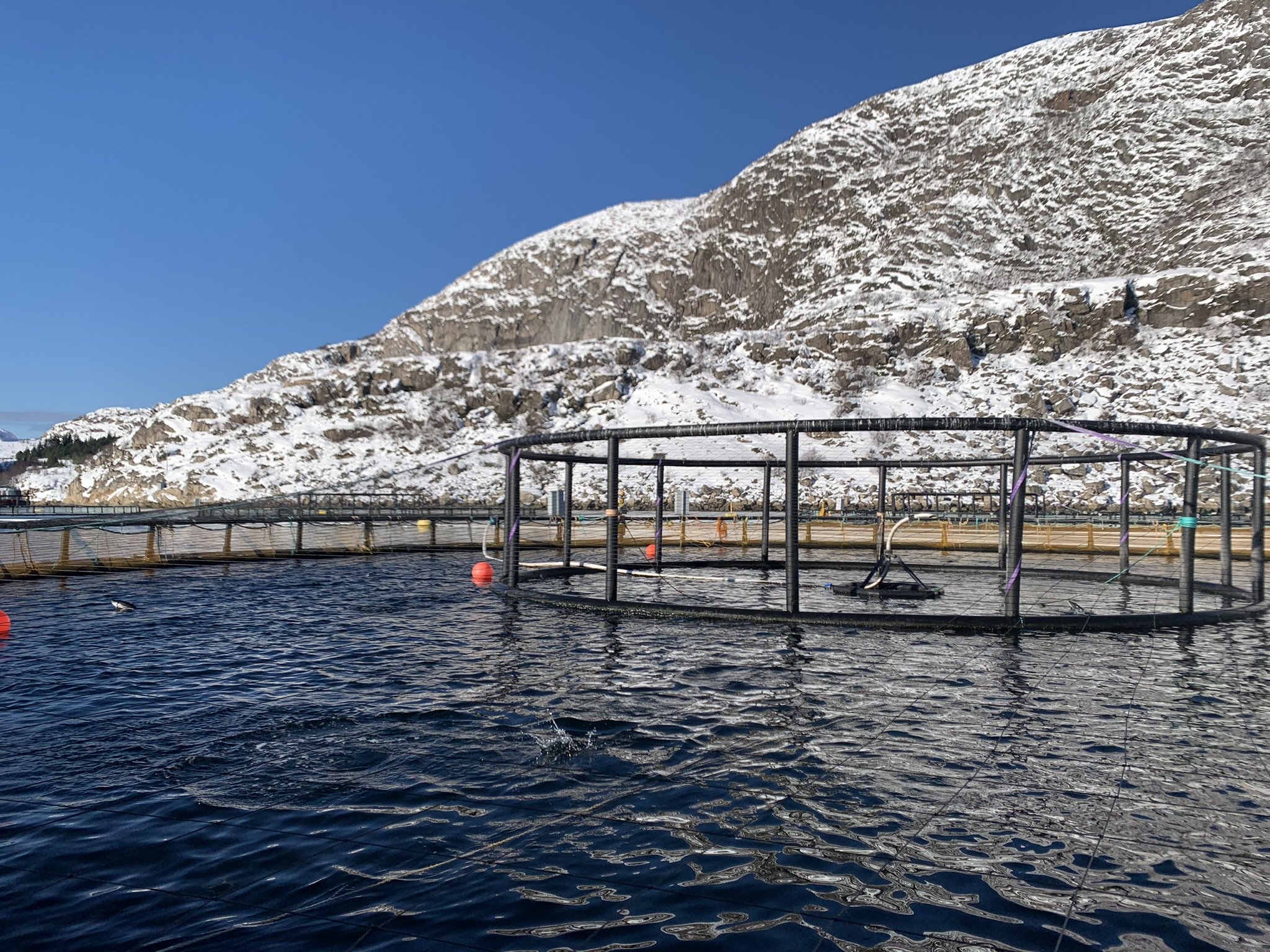Norwegian Salmon farming
One of the open-sea pens we visited. Each pen houses around 100 000 salmon, while each site has about 10 pens.
Image is subject to copyright | MariHealth Solutions 2023
In 2019, the fraction of biologically sustainable fishery stocks dropped to 64.6%. But rebuilding overfished stocks through improved fisheries management could increase fisheries production by 16.5 million tonnes, thereby contributing to global food security, nutrition and the welfare of vulnerable coastal communities. According to the UN, 70% more food will need to be produced by 2050, if we are to meet global dietary needs. The pivotal role of fisheries and aquaculture in providing the world with high-quality protein sources has become increasingly evident over the last 20 years. In the wake of Blue Transformation, the shift towards more sustainable aquaculture is definitively driven by climate change and the need to reduce our reliance and impact on the ocean’s resources.
According to the FAO, total fisheries and aquaculture production reached an astounding 214 million tonnes in 2020, with aquaculture comprising 122.6 million tonnes - worth an estimated USD 281.5 billion. One of the biggest players in this expansion is of course Norway. Historically, fish farming has been at the centre of Norwegians’ livelihoods and culture, and today it provides the world with more than half of the globally farmed salmon. With this growth, it is now Norway’s second largest source of revenue, benefitting from advanced technology and innovation through over 50 years of knowledge and experience. Furthermore, Norway’s salmon industry is stimulated by substantial industry investment to enable the technological advancement of its sub-sectors like animal health, nutrition and sustainable farming initiatives, like renewable energy.
The automated feeding tubes to each pen at the open-sea farm we visited.
This video is subject to copyright | MariHealth Solutions 2023
Having recently visited an open-sea pen of one of the larger salmon producers in the industry, it was evident just how impressive their operations and set-up are. Most salmon farming takes place in open cages in the shelter of the Fjords and islands, allowing farms to optimize biomass and feeding regimes. My visit to this particular farm provided amazing insight into their day-to-day activities and management practices. What was really amazing to see was the level of technology (this industry develops) in action - everything, from feeding, to animal and water monitoring, was automated. Gone are the days of physically weighing out fish feed and manually throwing them into the pens. Large floating barges are comprised of 4 silos (total capacity being 160 tonnes), storing fish feed, that are timed at various intervals throughout the day to deliver food to around 10 pens (with approximately 100 000 animals in each). Feed is then dispersed by a rotating tube/nozzle in the centre of each cage. One of the coolest things to see was the live video feeds of fish in cages at multiple sites along the coast being streamed and monitored by two men, some 40-70 kilometers away, in a control centre. This not only offers a centralized platform for managing farming parameters and data, but also a way to monitor fish feeding behaviour. Obviously AI and machine learning are going to revolutionize these processes even more in the not-too-distant future, but to see where the industry is at now was really incredible. Norway really values innovation and pushing boundaries, as well as fostering sustainable practices through collaboration, strong governance and policymaking. All this is evident in the close-knit industry’s attitude, the salmon farming value chains, and regulatory structures.
Rocking the high-viz look.
This image is subject to copyright | MariHealth Solutions 2023
Coming from a vastly different fish farming sector in South Africa, it was really inspiring to see where the industry can actually go with the right management, development and investment. In relative terms, the aquaculture industry in South Africa is “young”, and we can only benefit from learning and adapting from nations like Norway that are placing increasing emphasis on sustainability, innovation and collaboration. More on the industry’s aquatech developments can be found on The Fish Site.


